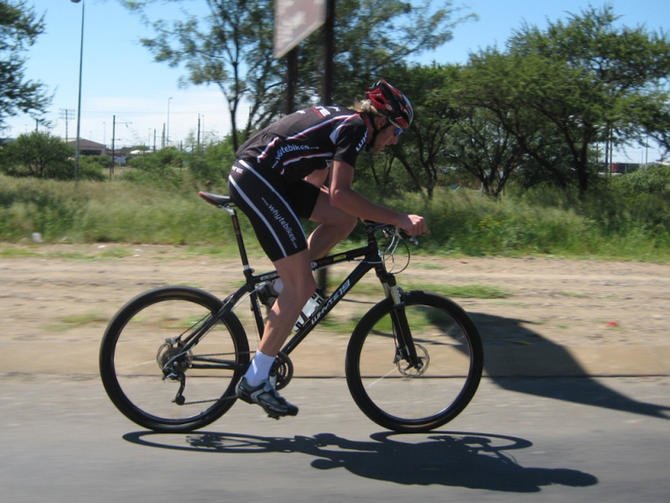With spring around the corner, road race schedules are beginning to surface all across the country. If you’re a mountain biker who wants in on the local road races this spring and summer, you can do it with a few fundamental adjustments to your mountain bike, and by planning your racing tactics to accommodate the aerodynamic differences between your mountain bike and the competition’s road bikes. Then you can hit the pavement with realistic expectations.
Mountain bike riders have perfected their sport on bikes that are generally heavier, with wide knobby tires to facilitate traction; they perform better with below-capacity air content, which adds to their traction and shock absorption in a variety of terrains.
Road bikes, on the other hand, have frames made of lightweight aluminum for speed on smooth pavement, unlike the heavier steel or alloys of mountain bike frames. Mountain bikes are designed to provide the rider with a more flexible and forgiving ride when it comes to shock absorption, front and rear suspension, and up to 30 gear speeds to meet the needs of varying terrains.
Road bikes are designed to maintain a relative stiffness to compensate for their light weight. And, since road bikes are built to travel on level pavement, their smooth, narrow tires and low handlebars are more suitable for riders who need to maintain speed and agility.
With all the obvious differences between mountain bikes and road bikes, let’s talk about ways to prepare your mountain bike for a road race.

Mountain bike riders can make some modifications so their mountain bike performs decently on pavement. But anyone who has raced a mountain bike against seasoned roadies on pavement will tell you to go for the experience, not necessarily for the win. If you prepare well, you can beat other mountain bike racers, but most likely the road warriors will be carrying you in their draft. In fact, if you’re racing smart that’s exactly what will happen.
But I’m getting ahead of myself.
The most important change you can make to your mountain bike in preparation for a road race is to switch out your tires for the narrow, smooth 1.5 inch semi-slick or a 1.75 inch inverted tread – the smoother the tire’s surface, the better the pavement ride. If you don’t have the right tires and don’t have money to burn, see if you can borrow semi-slick tires from someone just for the race.
Wade Shaddy, an expert on fitness, training and bike maintenance, says that the correct air pressure for the riding style of a road race is important for maximum performance. Shaddy recommends putting the highest amount of air pressure into the tire, according to the tire rating printed on the side. Not only will this allow the tire to ride up higher with a minimum amount of rolling resistance – something you need in a pavement race – it will help you ride fast. Shaddy says you can run 50 or 60 psi if the tire allows it, but keep in mind that you’re losing traction in the process.
Road warriors set their seats high and their handlebars low for a better aerodynamic performance, so the recommendation is to raise your mountain bike seat to a height that is efficient – you’ll want to lean forward into the handlebars, rather than sitting in the usual upright position to are accustomed to – this is to compensate for the lack of maneuverability you have on pavement. Try raising your seat a quarter inch, and see if that suits you. Adjust the seat according to your comfort level.
Generally, mountain bike frame designs provide shocks in the front and/or back. Hardtails have no shocks in the back but may have them in front. Hardtails are the lightest and fastest mountain bike design so they respond well, allowing the rider’s legs to absorb bumps and vibrations by standing on the pedals.
Before the race, if you have a lockout to stop motion in the fork or rear shock, use it. If your bike has no lockout feature, stay seated as much as you can during the race to prevent your weight from compressing the fork, which will impede your speed. You want to go as stiff as your bike will allow.
Prepare your strategy ahead of time as well since you’re heading into the race at a disadvantage. You will probably not be able to overcome the competent roadies with their lightweight, aerodynamic road bikes, but you can show decent results with the right strategy. Draft when you need to instead of trying to pick up speed when the roadies do. Take advantage of the wake from cyclists ahead of you to gain the advantage, rather than wearing yourself out trying to speed up your heavier, less road-worthy mountain bike.
Same thing goes for the downhills – remain in the draft as best as you can – let the roadies pass you and lock into their draft.
Make all the adjustments to your mountain bike that you can in order to ready it for a pavement race, and then enjoy yourself. Practice your strategies, experiment with drafting, and be happy to be the first mountain bike to cross the finish line.
